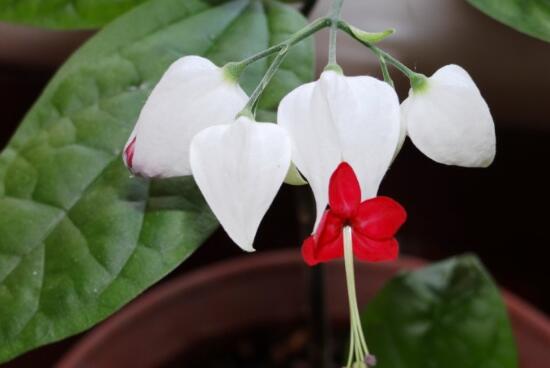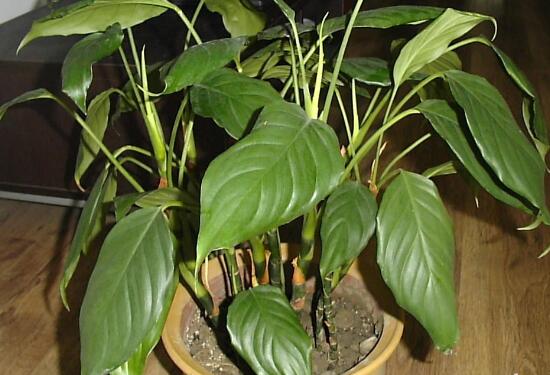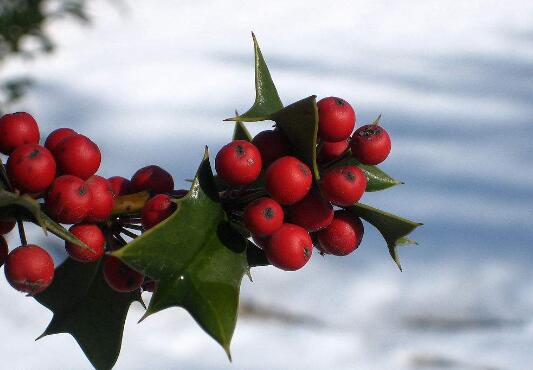How to reproduce dragon spitting beads? two propagation methods of dragon spitting beads (sowing / cutting)
For people who love flowers, dragon spitting beads must be no stranger, its white calyx, bright red Corolla, shaped like a swimming dragon spitting beads, looks extremely beautiful. In life, many people raise a pot of dragon spitting beads at home, but is a pot of dragon spitting beads too monotonous? It's time to breed a pot on your own, so how do dragons spit beads? Here are two common breeding methods of dragon spitting beads. Let's go and have a look.
First, how to reproduce, sow / cuttage dragon spit beads

As a novice in aquaculture, you can know the breeding method of dragon spitting beads; but if you are an old hand, in addition to raising, you should also master the breeding method of dragon spitting beads, which can not only make dragon spitting beads become more pots, but also increase the fun of breeding. As for how to reproduce dragon spitting beads, there are two common methods: sowing and cutting. next, let's take a look at the specific operation.
2. Two propagation methods of dragon spitting beads (1) sowing and propagation of dragon spitting beads
How do dragon spit beads reproduce? The sowing method is generally used, and the sowing time is generally chosen from March to April in spring. Before sowing, soak the seeds in warm water for 12 hours, and then sow them in a shallow basin. Because the seeds of the dragon spit beads are compared, the row spacing is kept at 3 × 5 cm. After that, keep the room temperature at 20-25 ℃, the seedlings can emerge in about 10 days, and go to the pot when the seedlings are 10 cm high.
Because the sown dragon spit bead seedlings will grow very slowly, and the vegetables can blossom in the next year, so those who want to let the dragon spit beads blossom in the same year can be propagated by cutting. It is worth mentioning that the seedlings sown will be healthier and stronger and will look more at ease. Next, let's take a look at the developed cutting propagation methods of Longtuzhu.
(2) Cuttage propagation of dragon spitting beads.
1. Cutting time
How do dragon spit beads reproduce? In addition to sowing, of course, the most commonly used is cutting, but dragon bead cutting, a wide range of choices, we can use branch cutting, leaf bud cutting, root cutting can be used. As for the cutting time, it is generally carried out in spring and autumn, which is the growing period of dragon spitting beads, its activity is high, and the cutting survival rate is the highest.
2. Cutting substrate
According to the growth habits of dragon spitting beads, peat, perlite, rotten leaf soil, river sand and vermiculite can be used. Keeping the temperature of the insert bed at about 26 ℃ will be very beneficial to rooting.
3. Cutting method
① branch cutting
On Longtuzhu potted plant, one-year-old branches with strong growth were selected and cut into 2 Mel 3 segments as cuttings. The apical leaves were retained and 1 cm 2 was cut off. Then insert the cuttings into the prepared substrate, maintain them in the shade, maintain the humidity, take root in 20 days, and plant in the pot after 35 days.
② leaf bud insertion
On the pot culture of dragon spitting beads, the lateral buds on the branches were selected as cuttings, cut with a small branch, and then cut in the prepared substrate. Note: leaf buds should be exposed to the outside of the substrate, and then shaded and maintained for 20-25 days can take root, waiting for leaf buds to germinate and put on the pot.
③ root insertion
This cutting method is generally combined with changing pots. Cut the rhizomatous stolon on the soil into 8Mel 10cm segments as cuttings, and then insert it into the prepared substrate. Keeping the temperature of the insert bed at about 26 ℃ will be very beneficial to rooting.
Generally speaking, breeding dragon spitting beads, whether sowing or cutting, can survive, but the most suitable for family reproduction is still cutting. Of course, the method is dead, people are alive, we can according to the actual situation, choose the method to breed. With regard to the breeding method of dragon spitting beads, this is the end of the editor's introduction, hoping to bring help to everyone.
How to propagate, sow, cuttage and split
How to reproduce dragon spitting beads 1. Sowing and breeding methods
The sowing and propagation of dragon spitting beads is generally carried out from March to April. Because the seeds of dragon spitting beads are larger, indoor sowing pots are used, and under the condition of 24 ℃ at room temperature, generally, the seeds can germinate about 10 days after sowing, and generally wait until the flower seedlings of dragon spitting beads are 10 centimeters high and move into small pots for maintenance, and the next year they can bloom.
2. The method of ramet propagation
Longtuzhu ramet propagation is generally carried out after Longtuzhu flower, first of all, it is necessary to dig up the new branches germinated on the underground stolon of Longtuzhu flower, be sure to take roots, then pot directly, and put them in a semi-shady place for maintenance.
3. Methods of cutting propagation.
When choosing the stem, insert the treated twig or hardwood into the soil.
When choosing root insertion, cut off a section of the strong root of the mother plant, and the lower incision is an oblique notch to avoid root inversion. Or when you can't tell the difference between the top and the bottom, put the cuttings flat on the medium and cover the soil.
The propagation method of dragon spitting pearl is commonly used in cuttage, ramet, sowing and propagation. Cuttage propagation: often by branch cutting, bud cutting and root cutting. The branches can be inserted into the top twigs of the strong and disease-free branches, or the lower old branches can be cut into stem segments of 8 cm and 10 cm as cuttings. Budding is to take the lateral buds on the branches, with part of the xylem, as cuttings. Root cuttings are rhizomatous cuttings that score instantly when the stolons are cut into 8cm long as cuttings. The cutting bed can be made of peat, perlite, rotten leaf soil, river sand and vermiculite, and the cutting in spring and autumn is the best. The optimum cutting temperature is 21 ℃ and the bed temperature is 26 ℃, which is very beneficial to rooting. It can take root 3 weeks after insertion. If 0.5%-0.8% indolebutyric acid solution is used to treat the base of cuttings for 1-2 seconds, it can take root faster and more. Ramet propagation: after flowering, the new branches germinated on the underground stolon are dug up, potted directly with roots and maintained in a semi-shady place. Sowing and reproduction: from March to April. The seeds were larger, sowed in indoor pots and kept at room temperature for 24 ℃. They germinated in succession about 10 days after sowing. When the seedlings were 10 cm high, they were moved into small pots for maintenance and could blossom in the second year.
- Prev

How to propagate Guangdong evergreen? the propagation method / cutting survival rate of Guangdong evergreen is high.
Guangdong evergreen, a very easy to feed plant, its broad leaves, evergreen all the year round, often used to decorate the living room, study and other places, has an excellent ornamental. But is a pot of Guangdong evergreen too monotonous? It's time to breed a pot of your own. How can Guangdong evergreen breed?
- Next

How to propagate holly, the propagation method of holly / sowing propagation / cutting propagation
Holly is a world-famous ornamental flower plant, which is cultivated all over the world, but with more people breeding, people are more concerned about its reproduction. How to reproduce holly? What are the breeding methods of holly? Next, the editor will take you to learn about it.
Related
- Fuxing push coffee new agricultural production and marketing class: lack of small-scale processing plants
- Jujube rice field leisure farm deep ploughing Yilan for five years to create a space for organic food and play
- Nongyu Farm-A trial of organic papaya for brave women with advanced technology
- Four points for attention in the prevention and control of diseases and insect pests of edible fungi
- How to add nutrient solution to Edible Fungi
- Is there any good way to control edible fungus mites?
- Open Inoculation Technology of Edible Fungi
- Is there any clever way to use fertilizer for edible fungus in winter?
- What agents are used to kill the pathogens of edible fungi in the mushroom shed?
- Rapid drying of Edible Fungi

